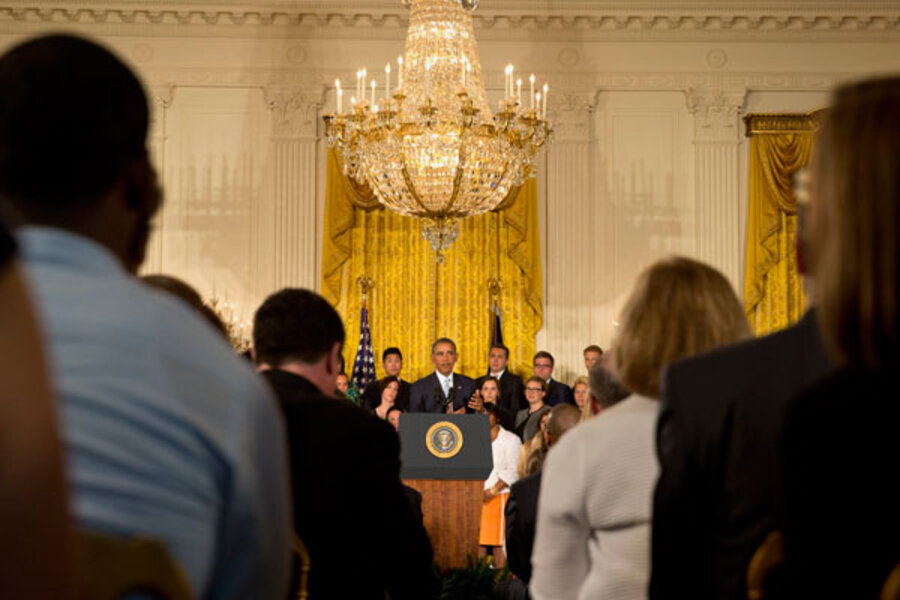Obama student loan plan: Who will it help, and how much?
Loading...
In the past year, President Obama has drawn significant attention to both the problems of spiraling college costs and student debt. On Monday, he tackled student debt through executive action.
The memorandum he signed would, among other things, allow more borrowers to cap their student loan payments at 10 percent of their income. He also directed the government to renegotiate its contracts with federal loan servicers like Sallie Mae to improve services for borrowers.
The president framed his actions as necessary to address a student debt crisis: Federal student loans or guarantees now total more than $1 trillion, with another $100 billion in private student loans. Some 71 percent of those earning a bachelor’s degree now graduate in debt, owing an average of nearly $30,000.
While most experts agree that rising college costs and student debt are a problem, not all agree that Obama’s executive actions are the best fix. Some criticized it as a largely political action that does little to address causes. Others say that Obama's moves leave the federal government picking up too much of the tab.
Under the old system, borrowers who qualified for income-based repayment and chose to use it got a $17,500 exemption, then paid 15 percent of their income and had the balance forgiven after 25 years – 10 years in the case of public service. That meant it didn't matter too much whether you had a big loan or a small one, made a lot of money or a little. Payments took a proportional chunk out of everyone's paycheck, and the 25-year window meant that students ended up paying back a sizable portion of the student loan.
In 2010, however, federal legislation established Pay As You Earn. PAYE capped payments at 10 percent of income and forgave remaining debt after 20 years, or 10 years in the case of a public service job. With his executive action Monday, Obama promised to extend PAYE to those who borrowed before 2007 or who haven’t borrowed since 2011.
Now, borrowers who take out large loans – for graduate school, for example – may only pay a small portion of it back before loan forgiveness kicks in, even if they have high-paying jobs. Indeed, the terms are so generous to borrowers that schools like Georgetown Law are telling students that it will make their loan payments for them if they go into public service – essentially offering "a free education financed largely by taxpayers," says Jason Delisle, director of the New America Foundation’s Federal Education Budget Project.
"When you've got $10,000 in debt, you're not talking about a big change in your monthly payment," he says. "But for someone who went to grad school and has $150,000 in debt, yes, they'll see a sizable difference."
Others criticized the actions as being little more than an election-year sop to drive young voters to the polls.
"There are a lot of people out there having financial stress, and this will reduce that financial stress, but this is a short-term solution. It does nothing for the underlying root cause of the problem, which is the rising cost of college," says Richard Vedder, director of the Center for College Affordability. "It's good politics, but I don't think it's particularly good economics."
For someone who went to Purdue University in Indiana in 1960, tuition would have been about 10 percent of the per capita income, says Mr. Vedder. Today, it's 26 percent.
Obama, in remarks Monday, addressed college cost issue as well, and made clear that it's a paramount concern for him. "As long as college costs keep soaring, we can’t just keep throwing money at the problem. We’re going to have to initiate reforms from the colleges themselves," Obama said.
Even so, he said, too many Americans are graduating under a debt load that is overly burdensome. "I can’t tell you how many letters I get from people who say I did everything I was supposed to and now I’m finding myself in a situation where I’ve got debts I can’t pay off," Obama said.






